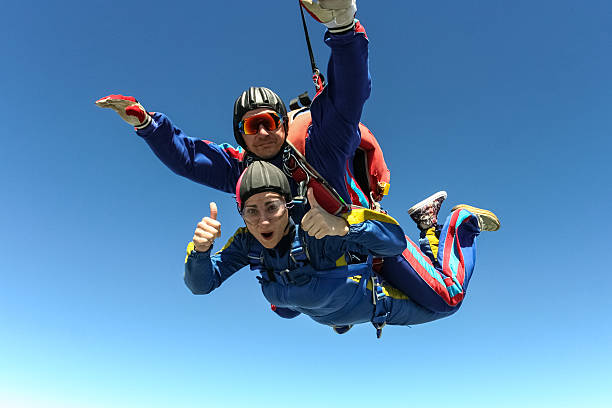Conquering the Sky: The Intricacies of Skydiving as a Sport
In the world of adrenaline-pumping adventures, skydiving holds a unique charm. The thrill of free-falling from thousands of feet above the ground, the rush of the wind, the awe-inspiring views - it's an experience that many crave. But beyond the exhilaration and spectacle, skydiving is a complex sport with its own set of challenges and rewards. Let's delve into the fascinating world of skydiving, from its historical roots to its current trends, to understand what it takes to conquer the sky.

From Parachutes to Freefall: The History of Skydiving
The origins of skydiving can be traced back to 18th-century France, when André-Jacques Garnerin made jumps from balloons using early versions of parachutes. Despite the initial skepticism, his daring pursuits paved the way for the evolution of parachuting, and eventually, skydiving as a sport. With the advent of airplane technology in the 20th century, parachuting took a new turn, leading to the birth of modern skydiving. Over the years, skydiving has witnessed multiple advancements, from improvements in parachute designs to the introduction of various skydiving disciplines.
Embracing the Thrill: Current Trends in Skydiving
Skydiving has come a long way since its inception. Today, it encompasses a wide range of disciplines including freeflying, wingsuit flying, and canopy formation, reflecting the sport’s dynamism and progression. The increased accessibility and safety measures have made skydiving an exciting adventure for thrill-seekers worldwide. Moreover, competitive skydiving events have gained substantial attention, further cementing the sport’s popularity.
Learning to Fly: Training and Challenges of Skydiving
Skydiving is more than just a leap of faith. It requires rigorous training, physical fitness, and mental toughness. Prospective skydivers must undertake ground-based instruction to understand the equipment, body control techniques, and emergency procedures. The first few jumps are usually tandem jumps, where novices are attached to an experienced instructor. As exhilarating as it may be, skydiving also poses significant risks. Weather conditions, equipment malfunction, and human error can lead to serious accidents. However, with appropriate training and adherence to safety protocols, these risks can be minimized.
Skydiving: A Leap Towards Personal Growth
Skydiving isn’t just about the adrenaline rush. It can help individuals develop various life skills. The sport teaches resilience, as it requires handling fear and uncertainty. It fosters discipline and focus, as a successful jump requires meticulous preparation and attention to detail. Moreover, skydiving can boost self-confidence and offer a fresh perspective on life, making it a transformative experience for many.
Conclusion
Skydiving, with all its thrill and challenges, continues to captivate millions around the globe. It stands as a testament to the human spirit’s relentless quest for adventure and personal growth. As we continue to explore the endless possibilities of this sport, one thing is certain: the sky is not the limit, it’s just the beginning.




